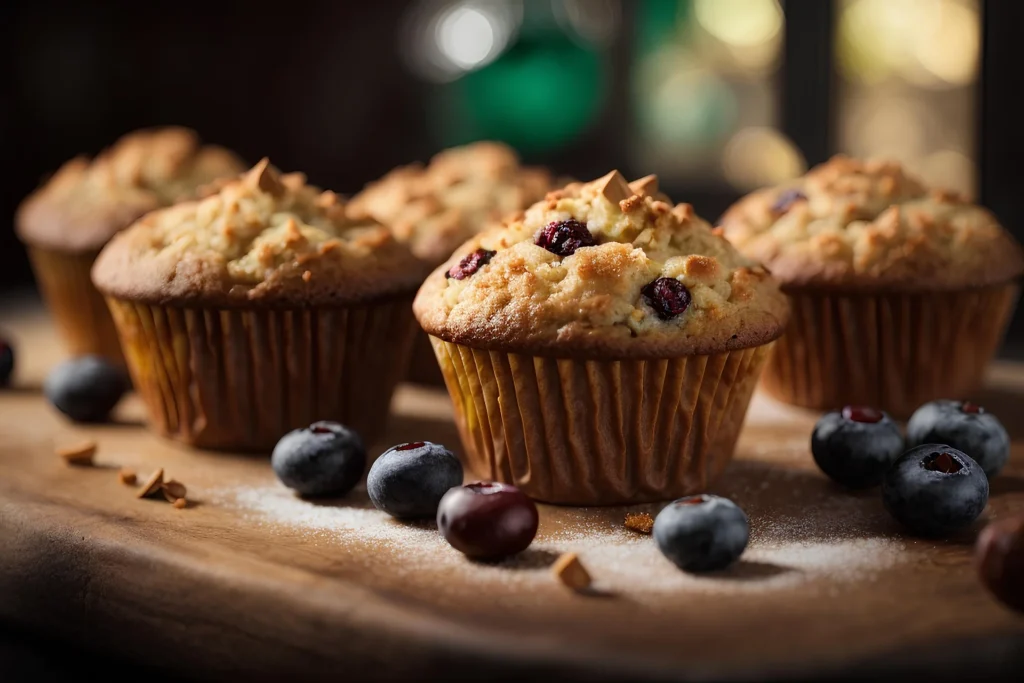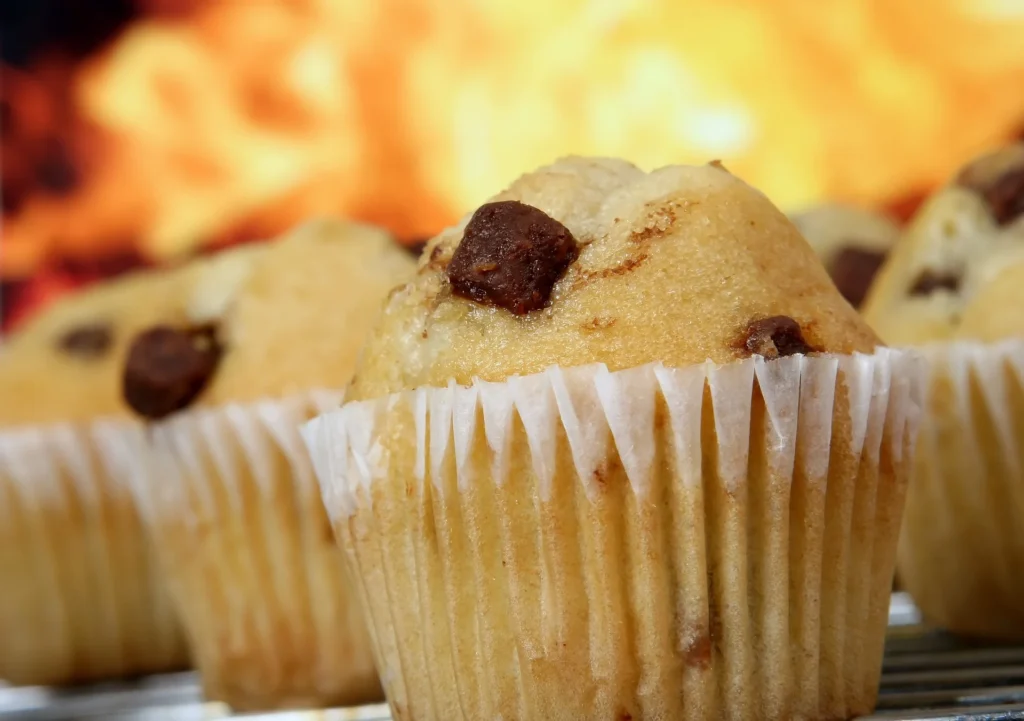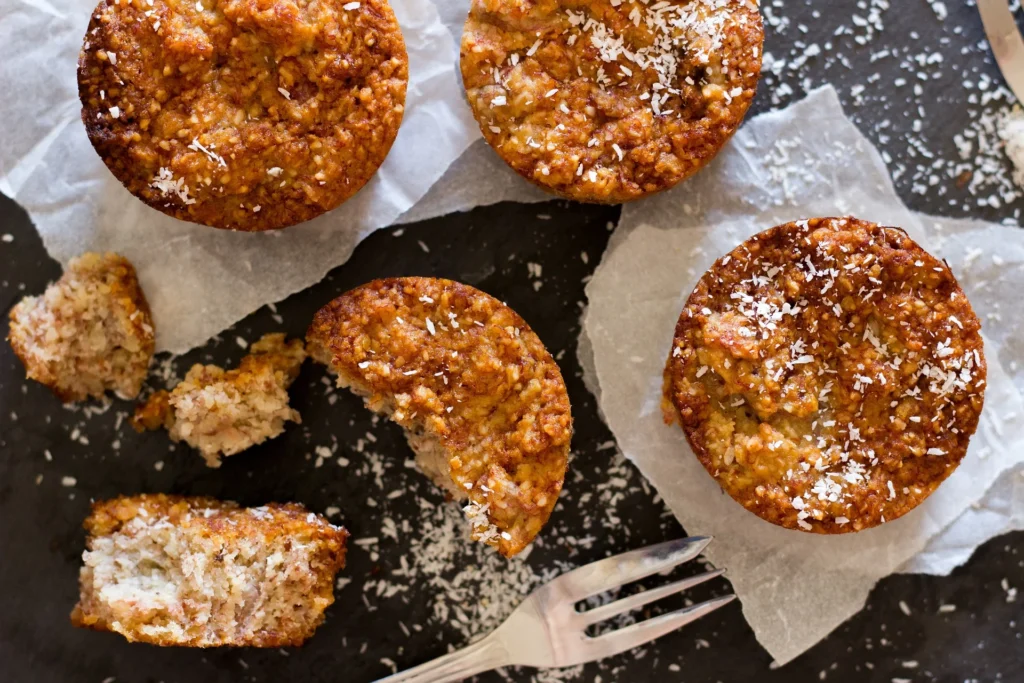Table of Contents
Introduction
Muffins are beloved baked goods that have become a staple in many households and coffee shops worldwide. Their soft, moist texture, and delightful flavor variations make them a versatile and delightful treat. In this article, we will explore the world of muffins, their history, popular types, how to bake them at home, and much more.
What Are Muffins?
Muffins are small, round, and typically sweet baked goods that come in a variety of flavors. They have a soft and crumbly texture and are often enjoyed for breakfast, as a snack, or even as a dessert. Muffins are a popular choice because of their convenience and delicious taste.
The History of Muffins
The history of muffins can be traced back to early 18th-century England. These muffins were more like what we now call English muffins – flat, round, and cooked on a griddle. Over time, they evolved into the American-style muffins we know today, rising to popularity in the 19th century.
Popular Types of Muffins
Muffins come in a wide range of flavors, but some of the most popular ones include:
1. Blueberry Muffins

Blueberry muffins are a classic favorite. Bursting with juicy blueberries, they offer a sweet and slightly tart flavor that’s hard to resist.
2. Chocolate Chip Muffins

For the chocolate lovers, chocolate chip muffins are a dream come true. The combination of soft muffin batter and gooey chocolate chips is a match made in heaven.
3. Banana Nut Muffins

Banana nut muffins blend the sweetness of ripe bananas with the nutty goodness of walnuts or pecans, creating a delightful taste and texture.
Baking Your Own Muffins
Baking muffins at home can be a rewarding experience, and it allows you to customize the flavors to your liking.
Ingredients You’ll Need
To bake a batch of delicious muffins, you will require a few essential ingredients:
1. Flour
All-purpose flour is the primary ingredient in muffin batter, providing the structure and bulk.
2. Sugar
Sugar sweetens the muffins, enhancing their flavor.
3. Eggs
Eggs serve as a binding agent, helping to hold the muffin together.
4. Milk
Milk adds moisture and contributes to the softness of the muffins.
The Muffin Baking Process
- Preheat your oven to the recommended temperature.
- Combine dry ingredients in one bowl and wet ingredients in another.
- Gently fold the wet ingredients into the dry mixture.
- Spoon the batter into muffin cups or a muffin tin.
- Bake until they’re golden brown and a toothpick comes out clean when inserted.
Muffins as a Versatile Snack
Muffins are incredibly versatile. They can be enjoyed fresh out of the oven, at room temperature, or even toasted. You can pair them with coffee, tea, or enjoy them as a quick and delicious snack on the go.
Nutritional Value of Muffins
Muffins can be nutritious, depending on their ingredients. They often contain essential nutrients, including fiber, protein, and various vitamins and minerals. However, some muffins can be high in sugar and calories, so it’s important to make informed choices.
Muffins in Popular Culture
Muffins have made appearances in literature, movies, and television. They symbolize comfort and home-baked goodness, making them a relatable and endearing part of popular culture.
Muffins Around the World
While muffins are a common sight in the United States, they have also gained popularity in various forms worldwide. From English muffins to Spanish magdalenas, muffins have found their place in diverse cuisines.
Conclusion
In conclusion, muffins are delightful treats loved by people of all ages and backgrounds. Their rich history, delicious flavors, and the joy of baking them at home make muffins a beloved part of culinary culture.
FAQs About Muffins
- Are muffins healthy? Muffins can be healthy if made with nutritious ingredients like whole wheat flour and fruits. However, many store-bought muffins can be high in sugar and calories.
- Can I make muffins without eggs? Yes, you can make eggless muffins by using egg substitutes like applesauce or yogurt.
- How should I store leftover muffins? Store muffins in an airtight container at room temperature for a few days or freeze them for longer shelf life.
- What’s the difference between muffins and cupcakes? Cupcakes are usually sweeter and frosted, while muffins are less sweet and often lack frosting.
- Can I make gluten-free muffins? Yes, you can make gluten-free muffins by using alternative flours like almond or coconut flour.

